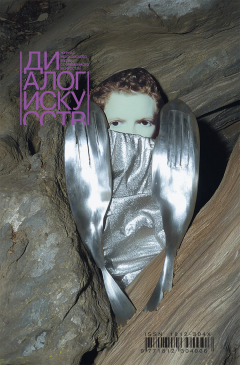
CrocodilePOWER. Movement towards the Rising Sun. 2020
|
Alexandra Rudyk: Massimiliano, Should we consider the pandemic a limit that divides the art history into two parts: before and after?
Massimiliano Gioni: I am not a prophet, and I am not an epidemiologist, and I try not to speak of what I don’t know, so my guess is as good as yours. Obviously the virus has already become the background against which all our actions and non-actions seem to take place and clearly this situation is bound to stay until a cure is found. I think it’s too early to see how the events will have an impact on the artwork artists make. Lately in the US there has been much discussion about the effect of the Spanish Flu and whether or not that pandemic left a visible sign on the history of art at the beginning of the 20th century. With the exception of the often-remembered paintings of Egon Schiele and Edvard Munch, there aren’t many other artworks or memorials that engaged with that moment in history. Perhaps the trauma was too big to be captured in images or perhaps it was too close to the First World War, either way it seems to have left less than a direct mark on the history of art. Other art historians have argued that one has to measure these changes on a longer time span, and so for example one could see the birth of modern architecture—with its emphasis on cleanliness and purity— as a specific reaction against the type of architecture of congestion that had helped spreading Spanish Flu. All this to say that history has its most lasting impact on art often in subterranean ways. I think the most evident effects of the health crisis are on the economic system, and that is obviously quite considerable. Galleries and museums are closed, the market has slowed down to vertiginous depths and particularly in New York—where the economic impact is immediately visible—the consequences on the art world 169 Summary have been dramatic. Will art continue to happen, yes, of course. Will it be forever changed by these events, perhaps, but in ways that I think are just too soon to determine.
Rudyk: Ок. Let your imagination run wild. Not many years ago, contemporary art didn’t have giant audience, billion worth sales, art studios with hundreds employees and museums didn’t have so many blockbusters in every year programme. However, art in Russia during 1990s, for example, made out of garbage for ten rubles was way more funny, accurate and interesting then the art of wealthy 2000s. What will be the next trend? How do you imagine the future post-pandemic art?
Gioni: I think the greatest works of art are based on a sense of necessity, and that to me is true for some of Andrey Monastirsky’s most restrained collective actions but also of some of Jeff Koons’s most maximalist projects. So, one would be unfair to judge art based on its production budget. Certainly in recent years we were already witnessing a kind of backlash towards high production values and maybe that will continue in the post-pandemic world. On the other hand, it is a well-known fact that artists always found interesting ways to deal with moments of economic crisis. Think of the rise of conceptual art in the 1970s, the emergence of relational esthetics, for lack of a better label, in the 1990s, and even the many great works made after the 2008 recession.
Rudyk: You’ve curated the project Encyclopedic Palace. Let’s imagine a similar project: it’s the last exhibition on earth before the catastrophe, you should show the most important pieces, symbolic ones, what would you choose?
Gioni: I know this sounds perhaps bombastic, and I actually mean it in the most modest sense, but I do think one should make shows always as though they were the last exhibition before a catastrophe: I know this sounds perhaps delirious, but one could think of exhibitions as arks of some kind, as exercises in preservation of what we are about to lose.




